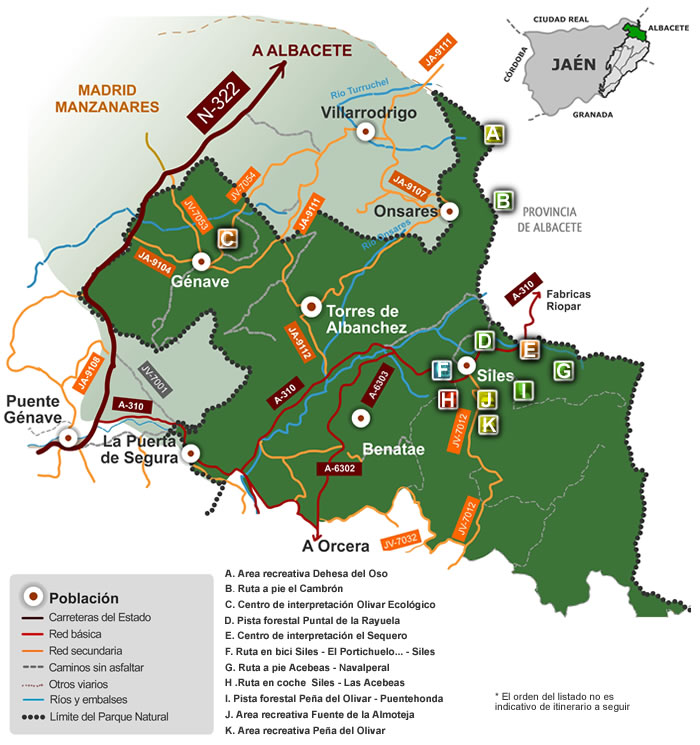A Green Treasure
THE NORTHERN EUROPEAN FOREST THAT REMAINED IN THE SOUTH
There is a place in the south that is so similar to the north that you may feel the urge to check your map to see that you are in luminous Andalusia. During the last ice age, the polar ice advanced pushing the forests of northern Europe southwards. Later, when the climate became warmer, almost all of them returned to their places of origin. Was it possible that a northern forest liked its new home in the south so much that it stayed there forever? In the green and fresh forest of Las Acebeas, among large holly and hazel trees, you will see that this miracle has happened.
If, after visiting the extensive pine forests of this area, you want to disembark and broaden your horizons, climb the Navalperal, Puntal de la Rayuela or Cambrón and you will see yourself over a sea of tree-covered mountains. Furthermore, twenty minutes from Siles you have one of the most visited places in the southern half of Spain: the spectacular Nacimiento del Mundo (Birth of the World) in the Cueva de los Chorros waterfall, in the neighbouring Parque Natural de los Calares del Río Mundo y de La Sima.
But the northern area of the Natural Park is distinguished by the variety of its landscapes. Here, man and nature have always woven an alliance that manifests itself in a harmonious mosaic of forests and olive groves. That is why, very close to the rugged mountains, you will find gentle hills covered with olive trees and small traditional villages and hamlets.
To get into this culture, which is both agricultural and forest, you can visit two essential interpretation centres. In Siles, you can learn about the old mountain trades at the El Sequero Visitors' Centre. And in Génave there is the Interpretation Centre of the Ecological Olive Grove, a crop that this town has pioneered.
To complete this gratifying panorama of diversity, at a very short distance from the limits of the Natural Park you will be surprised by the landscape of the last foothills of Sierra Morena, where, in autumn, you can easily see large groups of deer devoted to the rite of the rut, in clear pastures and mountains covered with holm oaks and Mediterranean scrub.




